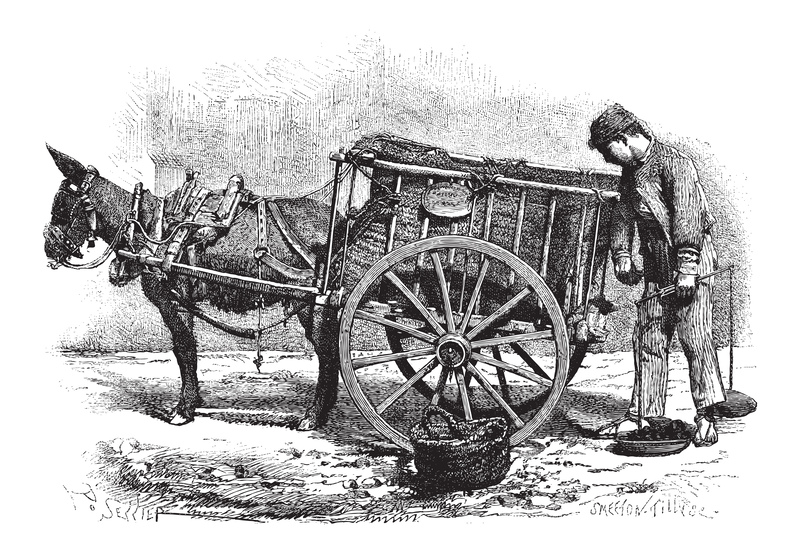Innovative Strategies to Curb Microplastic Pollution
In recent years, microplastic pollution has emerged as a critical environmental concern impacting ecosystems, aquatic life, and human health globally. As the evidence of its detrimental effects continues to rise, scientists, policymakers, and innovators worldwide are turning their attention to groundbreaking solutions designed to curb microplastic pollution. This comprehensive guide explores the latest and most effective strategies for controlling and ultimately reducing the spread of microplastics in our environment.

Understanding Microplastic Pollution: Causes and Consequences
Microplastics are minuscule plastic particles, typically less than 5 millimeters in diameter, originating from larger plastic debris or manufactured products such as cosmetics and clothing fibers. Their persistent and pervasive presence in our waterways, soil, and even the air underscores the urgent need to adopt innovative methods to address microplastic pollution.
Primary Sources of Microplastics
- Degradation of Larger Plastics: Over time, plastic waste breaks down into finer particles due to UV radiation, mechanical abrasion, and other environmental factors.
- Microbeads in Personal Care Products: Tiny plastic beads in exfoliating scrubs, toothpaste, and cleansers commonly end up in wastewater systems.
- Synthetic Textile Fibers: Washing clothes made from materials such as polyester and nylon releases microfibers into water bodies.
- Tire Wear: The friction between vehicle tires and road surfaces generates microscopic rubber particles that enter the ecosystem.
The Impact of Microplastics
- Marine and Terrestrial Ecosystems: Microplastics are ingested by aquatic life, causing physical harm and chemical contamination up the food chain.
- Human Health Risks: Increasing studies suggest the potential for these particles to enter our bodies via seafood, water, and even the air we breathe, with risks still being investigated.
- Soil and Agricultural Impact: Contaminated soils can affect crop growth and food safety, leading to far-reaching consequences for food security.
Pioneering Solutions to Reduce Microplastic Pollution
Efforts to reduce microplastics demand a multi-faceted approach, spanning cleanup technologies, alternative materials, product redesign, regulatory frameworks, and the power of community action. Here are some of the most innovative and promising strategies being implemented across the globe.
1. Advanced Filtration Technologies
One of the most effective ways to prevent microplastics from reaching natural water bodies is by upgrading municipal and industrial filtration systems. Innovative filtration and capture technologies are being developed to remove microplastics at the source.
- High-Efficiency Membrane Filters: These are capable of capturing particles as small as a few microns, making them ideal for removing microplastics from wastewater.
- Magnetic Extraction Systems: A recent breakthrough involves attaching magnetic nanoparticles to microplastics, allowing for their easy removal using magnetic fields.
- Retrofit Washing Machine Filters: Manufacturers and startups are now introducing filters that trap microfibers from apparel during laundry cycles, greatly reducing pollution from synthetic textiles.
2. Biodegradable and Alternative Materials
Transitioning away from conventional plastics to biodegradable alternatives can dramatically curb the introduction of new microplastics into the environment.
- Plant-Based Polymers: Materials derived from cornstarch, cellulose, or algae offer sustainable, biodegradable replacements for packaging and single-use items.
- Innovative Bioplastics: Companies are developing bioplastics that break down more effectively, minimizing the formation of persistent microplastic residues.
- Natural Fiber Textiles: Encouraging the use of cotton, hemp, and bamboo textiles--over synthetic fibers--can help reduce microplastic fiber pollution.
3. Product Redesign and Eco-Innovation
Manufacturers are reengineering products to limit microplastic release through design thinking and ecological innovation.
- Microbead-Free Cosmetics: Many beauty brands have phased out plastic microbeads in favor of natural exfoliants like jojoba beads and salt crystals.
- Durable Materials: Producing longer-lasting products and encouraging repair over disposal reduces the frequency of plastic breakdown into microplastics.
- Low-Shedding Fabrics: Innovations in fabric manufacturing are reducing microfiber shedding, a major source of aquatic microplastic pollution.
4. Enhanced Waste Management and Recycling
Robust waste management systems are critical in stopping plastics from entering natural ecosystems where they break down into microplastics.
- Improved Sorting Technologies: Advanced sorting at recycling facilities ensures plastics are properly processed and reused, minimizing pollution.
- Closed-Loop Recycling: Companies are adopting closed-loop systems to turn plastic waste into new products, keeping materials in circulation and out of the environment.
- Community-Led Cleanup Initiatives: Engaging citizens in river, beach, and urban cleanups catches plastic litter before it fragments into microplastics.
5. Legislative and Regulatory Innovations
Governments play a pivotal role in tackling microplastic pollution through the formulation and enforcement of policies.
- Bans on Single-Use Plastics: Cities and countries worldwide have implemented bans or taxes on plastic bags, straws, and utensils to reduce environmental load.
- Regulation of Microbeads: Legislation banning microbeads in personal care items has become a significant step in many regions.
- Producer Responsibility Programs: Extended Producer Responsibility (EPR) schemes require manufacturers to manage the end-of-life of products and packaging, encouraging sustainable design.
Cutting-Edge Research and Emerging Technologies
Researchers and tech innovators are continually uncovering new ways to detect, analyze, and eliminate microplastics.
- Oceanic Cleanup Devices: Autonomous systems such as The Ocean Cleanup's river interceptors and ocean skimmers are actively collecting floating plastic debris before it degrades into microplastics.
- Microplastic Degrading Enzymes: Scientists have identified bacteria and enzymes capable of breaking down certain plastics, opening the door for natural decomposition methods.
- Smart Sensors and Drones: Advanced monitoring technologies--such as AI-powered sensors and aerial drones--assist in identifying contamination hotspots and tracking microplastic flows.
Community Involvement and Educational Strategies
*Addressing microplastics pollution* involves not only technology and regulation but also public education and behavioral change.
- Environmental Education: Curriculum enhancements and awareness campaigns ensure that new generations understand the impacts of plastic pollution and become advocates for reduction measures.
- Sustainable Consumer Choices: Encouraging consumers to choose products with eco-friendly packaging, natural fibers, and reusable options is essential for reducing demand for problematic plastics.
- Citizen Science Projects: Volunteer-driven sampling and monitoring efforts help scientists gather data on microplastic prevalence and drive policy action.
Top Tips for Individuals to Help Reduce Microplastics
While systemic changes are crucial, individual actions collectively contribute to minimizing microplastic pollution:
- Opt for Natural Fibers: When purchasing clothing, select cotton, wool, or bamboo over synthetic materials.
- Install Washing Machine Filters: Consider adding a filter to your washing machine to capture microfibers.
- Avoid Products with Microbeads: Choose skincare and cleaning products that are microbead-free.
- Reduce Single-Use Plastics: Say no to plastic bags, water bottles, and disposable cutlery whenever possible.
- Support Circular Economy Initiatives: Buy products from companies that use recycled or recyclable materials and promote sustainable packaging.

Future Outlook: Creating a Microplastic-Free World
The battle against microplastic contamination requires coordinated global action that leverages innovation, regulation, and community stewardship. Promising advancements in technology, materials science, and behavioral education offer hope that we can reverse the alarming trends in microplastic pollution. Collaboration between governments, industry, researchers, and citizens stands as the most powerful strategy to create lasting change and secure a healthier planet for generations to come.
Conclusion
Microplastic pollution is a complex environmental issue, but humanity is responding with unprecedented ingenuity. By combining new technologies, alternative materials, policy measures, and cultural transformation, we are charting a path toward a cleaner, safer world. Implementing and supporting these innovative strategies to reduce and curb microplastic pollution is essential--not just for the protection of our waterways and wildlife, but for the preservation of public health and sustainable futures worldwide. By staying informed and taking action at every level, from individual choices to organizational leadership, we can make a tangible difference in overcoming the threat of microplastics.
Let's unite to drive innovative solutions for microplastic pollution--for today and for the future.